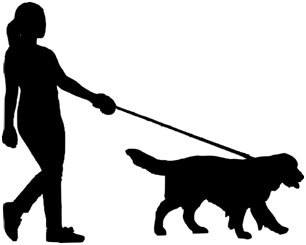
The Benefits of Being Active with Your Pets
At Harbor Pines Veterinary Center, we believe in staying active with your pet, because of the benefits for people as well as pets. People with pets tend to be generally healthier, and they enjoy the “pet effect,”which includes lower blood pressure and heart rate and an increased sense of well-being. In this blog post, Benny the terrier and Berry the Bengal make strong arguments for why they and their humans should be active together. They may fight like cats and dogs about other things, but Benny and Berry agree that staying active is important. They also agree that our Harbor Pines Veterinary Center team is the best source of support and information on safely getting active with your pets.
Benny’s tips for staying active with your dog
Benny the terrier: “I wasn’t meant for a life of couch-surfing. I like to investigate the surroundings, looking for ways to help our family. Mental and physical work are necessary for my well-being. My brother Bobby didn’t get enough activity, and he developed several behavior problems, gained a lot of weight, and began nipping at people. My other brother, Bubba, does agility competitions with his person, and they really enjoy it. But we can do lots of things together that are helpful and fun, and require less time commitment.
“Let’s plan to walk together after supper. It will be awesome. We’ll shoot for twice a week at first. Then, as we get into the habit, I bet we will be walking every evening in no time. I know you have long days at work, but we could still take a long walk twice a day, and I’ll tell you how— delegate! Terriers are pretty good at teamwork and, believe me, delegating is the key. The kids in our family can take turns walking me. They will get exercise, and learn responsibility, as well.
“Speaking of delegating, don’t forget Grandpa. As an active terrier, I could never sit at a desk long enough to read a scientific report, let alone write one. But I heard someone say that scientific research has shown that the human-animal bond promotes healthy aging. If Grandpa is not up for a long walk or a game of fetch, he can take me to the dog park. The social interaction we’ll both get will be as helpful as the physical exercise.”
Berry’s tips for staying active with your cat

Berry the Bengal: “I love my spring toy. I will chase the laser light every night before you go to bed. But, I really love it when you pull the feather toy around the house or yard. I can’t help but chase that crazy thing. And when the kids pull it, we get really fast. Sometimes the kids’ faces get red and they sweat. I’m not that familiar with sweating, as I only sweat from my paw pads, but I know that sweaty red faces in humans means they are getting good exercise.
“I now have an important announcement for the family—I will consider trying the harness. If it means we can walk together downtown with the cool cats, I might be willing to wear it. Luckily, I am still a kitten, and harness training has a better success rate in cats when started at an early age. Taking walks together will be the best. Don’t forget to check in with the Harbor Pines team for tips on harness training cats.
“Now for my favorite tip for being active together—treat puzzles. We will exercise our minds and bodies with this one. You will load the treats into the toys and hide them around the house—you’ll have to get more creative than under the bed, or the cat tree top tier. I will spend the day hunting them down while you’re at work. What could be better?”
Benny the terrier doesn’t climb cat trees, and Berry the Bengal doesn’t play fetch, but this dog and cat agree—your veterinarian is the best source of help for staying active with your pets.
Benny (and Berry agrees): “When planning exercise with your pet, you must consider many factors, such as age, breed, health, and temperament. Harbor Pines Veterinary Center professionals are the experts you need. They know your pet’s medical history, and they are up-to-date on the latest information. They are AAHA-certified, and Berry and I trust them to know what’s best for us. You can, too.”
Benny and Berry are fictional characters, but they represent what we believe our patients feel about us, and about being active with their families. Contact us at Harbor Pines Veterinary Center for the best ideas about keeping your pets active and healthy—and your humans, too.




























